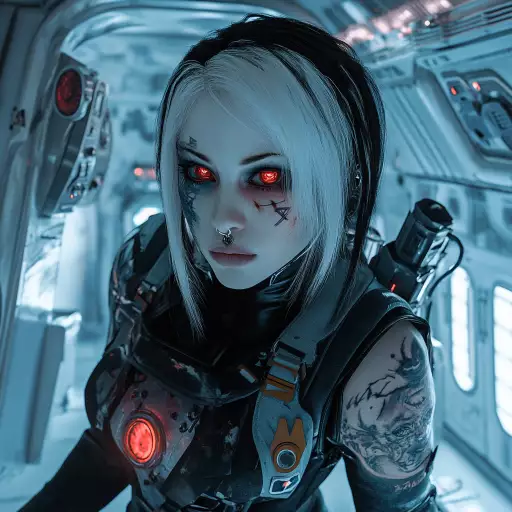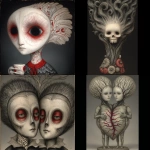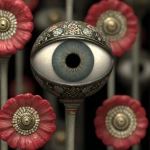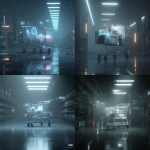Explore the Best AI Image Gallery

AI: The Designer in the Machine - Reshaping Graphic Design
The realm of graphic design is undergoing a seismic shift. Artificial intelligence (AI), once a futuristic concept, is now a tangible force, reshaping how designs are conceived, created, and experienced. From automating repetitive tasks to generating entirely novel visuals, AI is blurring the lines between human creativity and machine ingenuity.
This blog post delves into the multifaceted impact of AI on graphic design, exploring its diverse applications, potential benefits, and the ethical considerations that accompany this technological revolution.
AI-Powered Design Tools: A New Arsenal for Creatives
A plethora of AI-powered tools are emerging, empowering designers with unprecedented capabilities. These tools can:
- Generate Design Concepts: Imagine feeding an AI algorithm your brand guidelines and desired message, and it presents you with multiple design concepts to choose from.
- Customize Existing Designs: AI can effortlessly modify existing designs based on specific parameters, such as color palettes, typography, or layouts.
- Create Vector Graphics and Illustrations: AI algorithms can generate intricate vector graphics and illustrations, freeing designers from tedious manual tasks.
- Optimize Design for Different Platforms: AI-powered tools can automatically resize and adapt designs for various screen sizes and platforms, ensuring optimal visual impact.
The Benefits of AI in Graphic Design
The integration of AI into graphic design workflows offers numerous advantages:
- Increased Efficiency: AI automates repetitive tasks, freeing up designers to focus on higher-level creative endeavors.
- Enhanced Creativity: AI can generate innovative design concepts and ideas, pushing the boundaries of imagination.
- Personalization at Scale: AI enables the creation of personalized designs for individual users, enhancing customer engagement.
- Cost Savings: Automation reduces the need for manual labor, potentially leading to cost savings for businesses.
Ethical Considerations: Navigating the AI Landscape
While the potential benefits of AI in graphic design are undeniable, its crucial to address the ethical considerations:
- Job Displacement: AI-powered tools may automate certain tasks currently performed by designers, raising concerns about job security.
- Bias and Fairness: AI algorithms can perpetuate existing biases present in the training data, leading to unfair or discriminatory design outcomes.
- Intellectual Property Rights: Questions arise regarding ownership and copyright of designs created by AI algorithms.
- Transparency and Explainability: The decision-making processes of complex AI models can be opaque, making it difficult to understand how designs are generated.
The Future of Graphic Design: A Human-AI Collaboration
The future of graphic design lies in a harmonious collaboration between human creativity and AI capabilities.
- Augmented Creativity: AI will serve as a powerful tool to augment human creativity, enabling designers to explore new ideas and push creative boundaries.
- Personalized Experiences: AI will facilitate the creation of highly personalized design experiences tailored to individual preferences.
- Ethical Design Practices: The industry will need to develop robust ethical guidelines and best practices for the responsible development and deployment of AI in design.
Conclusion
AI is transforming the graphic design landscape, offering both immense opportunities and ethical challenges. By embracing AI as a collaborative tool, fostering ethical awareness, and prioritizing human creativity, we can harness its potential to usher in a new era of innovative and impactful design.





](https://images.ai-img.art/thumbnails/150/1b14bd827b740aca3b0d8efa7ed6865e28c7c8382172f3f565c96b6c5f64ca78.webp)










](https://images.ai-img.art/thumbnails/150/6a577517a359cd2bc6212d6b0f12c7cab660841317023550a76c84f409c7f2d0.webp)










](https://images.ai-img.art/thumbnails/150/6a9bb97a3f1c45ab616724cc54bca010cbcc2d658a9c0e4581aa181c88046444.webp)









](https://images.ai-img.art/thumbnails/150/065f0b2e150f4cc43a9da80d822e8a385e9e50f2f6ff2cc3be7639cfd74952da.webp)

](https://images.ai-img.art/thumbnails/150/45237dfa7845159b860f9e234c48c4418e8efcb52b4d15da4493f46e6a99f337.webp)









